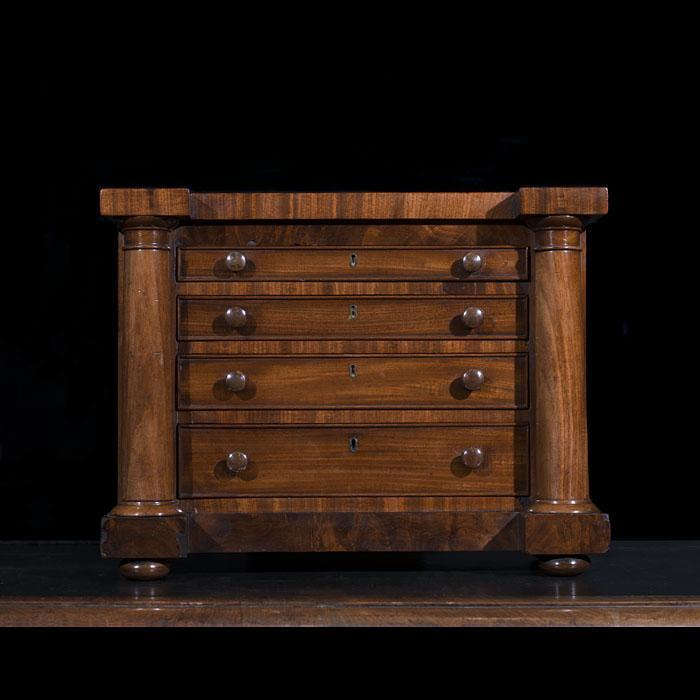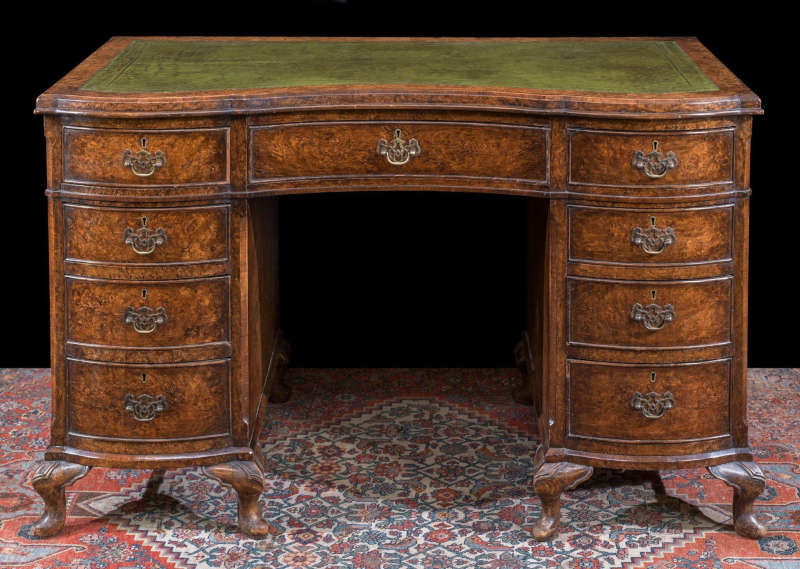You’ll soon start to get a feel for the style of different eras
Identifying antique dresser styles can be tricky, but a good starting point is to get a sense of approximately when the furniture may have been designed.
Some of our descriptions of antique dresser styles below are brief, but there’s a good reason - they often vary in appearance significantly even if they’re from the same period or artistic movement.
There isn’t always a consistent set of strict criteria that antique dresser styles adhere to from one decade to another.
We’ve provided some initial guidance alongside the different eras. If you suspect an antique dresser could be from one of them, we recommend searching for images online - you’ll soon start to get a feel for the style of different eras.
In addition, we also recommend consulting our recent article on how to date antique furniture by its feet. Some of the most distinctive elements of antique dressers are the lower legs - so this is a great place to start when identifying antique dresser styles.

× 
Identifying antique dresser styles by time periods
Below is a list of time periods and a broad description of how antique dresser styles evolved throughout history.
- Middle Ages: Designs were relatively simple, with more creativity coming in from the Renaissance era onwards - covered in the next section.
- Louis XIII: Geometric shapes became more popular during the French king’s reign (1610 - 1643) and the furniture was larger.
- Queen Anne: Moving into the 18th century, the cabriole leg was popular on furniture during this time.
- Régence: Antique dressers tended to use solid and darker wood, including a greater variety of leg shapes and some heavier metal mounts.
- Louis XV: During this time, furniture followed a more asymmetrical style, whilst curved lines were used as a guiding principle.
- Directoire: Staying with France, this is where antique dresser designs began to look more elegant, stylish and sophisticated.
- Empire: The French Empire style, which began during the reign of Napoleon, influenced design as many pieces were characterised by militaristic elements.
- Restoration: Dressers tended to feature walnut, either in solid form or as part of veneer.
- Louis Philippe: Moving on to 1830 - 1848, dressers tended to be smaller in size and featured a mix of elements from various styles.
- Napoleon III: This period is also referred to as the Second Empire. Dressers were more likely to include extravagant touches during this time.
- Victorian: Revivalist in style as it adopts stylistic motifs from other periods, with rosewood and mahogany being favoured during this time.
- Edwardian: Look out for decorative inlays on Edwardian antique dressers.

× 
Identifying antique dresser styles by popular artistic traits
Their characteristics are mainly based on artistic movements throughout history
Now, we’ll reveal how to go about identifying antique dresser styles by some common features. Their characteristics are mainly based on artistic movements throughout history.
- Renaissance: Symbolic of this 15th-16th century theme of rebirth, antique dressers from this time period stood out more with newer, more ornately carved designs.
- Rococo: Also known as Late Baroque - dating back to the 18th century, look out for a whorl shape on the feet of the dresser, at the end of its cabriole style legs.
- French provincial: Made in the provinces or small French cities, these dressers tended to have cabriole legs.
- Art Nouveau: As we enter the 20th century, floral motifs were the predominant theme, with pieces often featuring curved lines.
- Art Deco: Until the Great Depression, the style of Art Deco was bolder - luxurious, rich and bright, featuring dressers with intricate wood inlays and striking patterns.
Final thoughts: identifying antique dresser styles
As you can see, antique dressers varied significantly by shape, style and size, so it may not be straightforward to start identifying antique dresser styles via a brief inspection alone.
One of the best ways to try identifying antique dresser styles is to look for a maker’s mark, a stamp or a signature. These will be hidden away somewhere - perhaps behind the dresser, or in a drawer.
Recently, we've been expanding our series of ‘how to identify’ articles. Our collection now includes information on how to identify antique dolls, clocks, vases and glass.
If you’d like to learn more about identifying antique dresser styles, just let us know! And if you would like to enquire about any antiques we have in stock, then please don’t hesitate to get in touch.